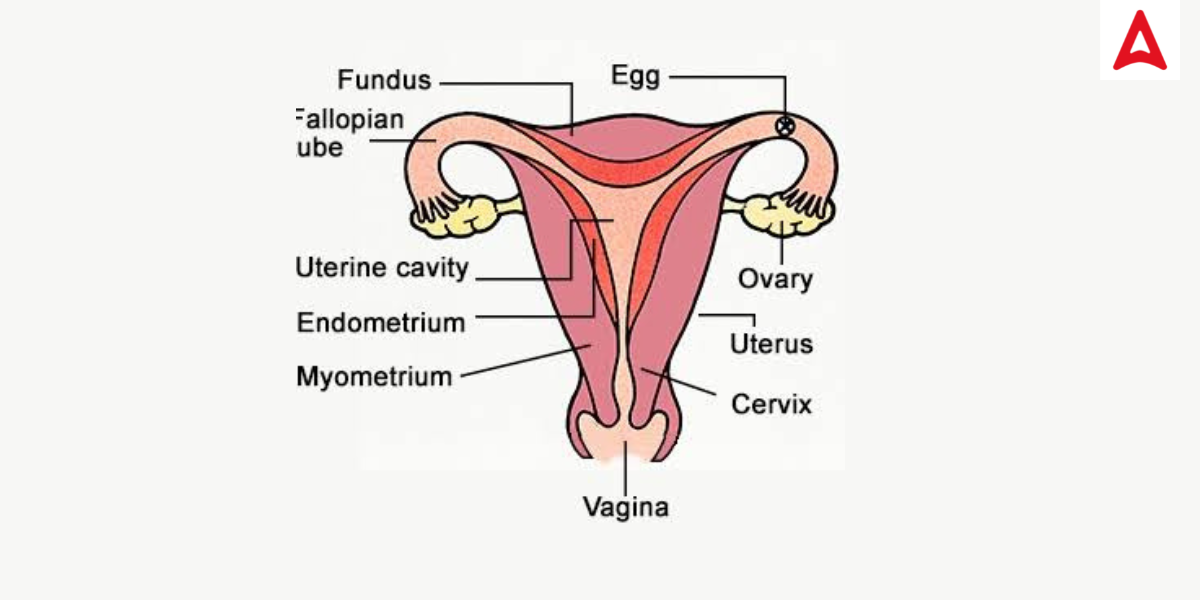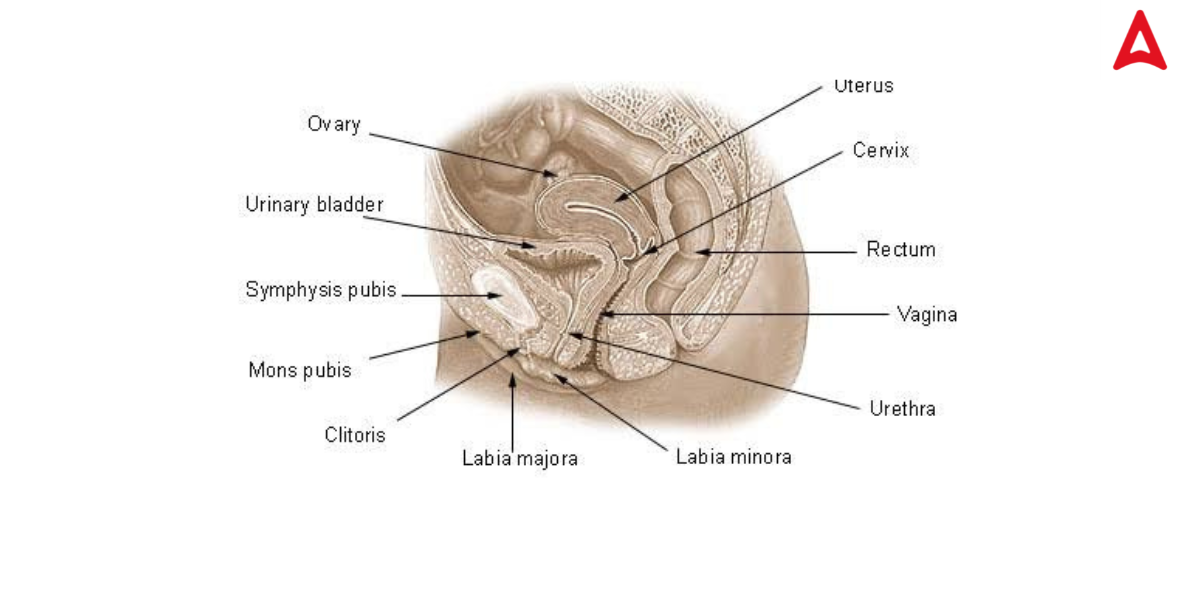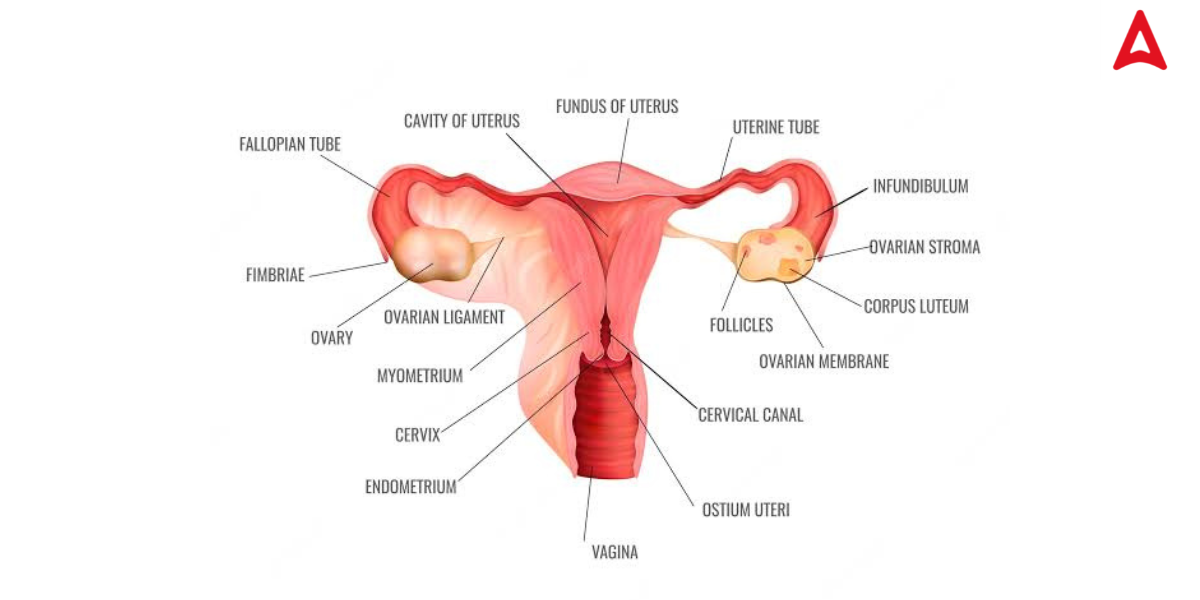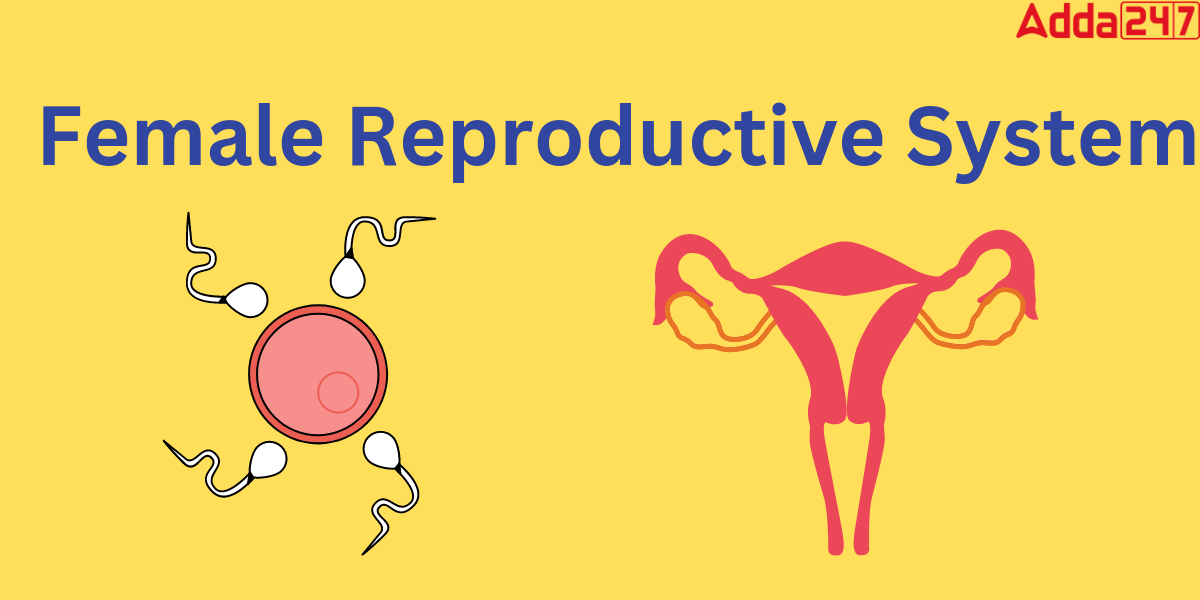Female Reproductive System
The female reproductive system serves a variety of functions. The female reproductive system includes both the primary sex organs and accessory sex organs. The female reproductive system produces female eggs, also known as ova or oocytes. The primary function is to transport the oocyte to the location of fertilization. In the fallopian tubes, an egg and sperm are fertilized. In this article, we going to learn about different parts of the Female reproduction system, their function, and many more.
Female Reproductive System Parts
The female reproduction system formed by the combination of functional organs such as egg production and secretion, ovum formation, and the transformation of the ovum into a baby is called the female reproductive system. The female reproductive system includes two ovaries as well as oviducts, a vagina, a cervix, a uterus, and the external genitalia, all of which are situated in the pelvic area. Along with a pair of anatomically and functionally integrated mammary glands, these components support the processes of ovulation, fertilization, childbirth, and ultimately child care.
Female Reproductive System Parts Diagram for Class 10 & 12
The female reproductive system is divided into two sections:
- Internal Organs-The internal organs of the female reproductive system include ovaries, fallopian tubes, uterus, cervix, and vagina.
- External Organs: The external organs are the mons pubis, labia majora, labia minora, clitoris, urethra, vulva vestibule, vestibular bulbs, Bartholin’s glands, Skene’s glands, and vaginal opening.

Female Reproductive System Parts and Functions
Here we provide the function of both the External and Internal parts of the Female reproductive system is given here.
Female Reproduction System: External Organs
The primary purpose of the external organs or vulva is to receive sperm during sexual contact and to protect the internal reproductive organs by covering them. The external female genitalia is used for urinating and The Labia Majora is one of the external organs that has sweat and oil-secreting glands to help in sperm uptake. The entrances to the vagina and urethra are encircled by the Labia Minora, which is situated inside the Labia Majora. The glands of Bartholin aid in fluid secretion. The most delicate component of the female reproductive system is the clitoris.

Female Reproduction System: Internal Organs
The Internal organs of the Female Reproduction System are the vagina, uterus, fallopian tubes, and ovaries.
Female Reproductive System Diagram Labeled
Female reproductive system diagram is given below.

Female Reproductive System Functions
Multiple functions are performed by the female reproductive system as follows
- The main function of the Female reproductive system is to produce eggs. The main part of the Female reproductive system is Ovary which is responsible for producing eggs or oocytes.
- for the synthesis of the female sex hormones progesterone and estrogen.
- The system is also set up to permit fertilization of the egg and sperm cells and embryonic development.
to provide care for the young. - The internal reproductive organs receive the sperm during sexual contact and start the fertilization process.
- By producing female sex hormones, the female reproductive system directly impacts secondary female characteristics.
Explain Female Reproductive System: Fertilization
The female reproduction system plays a major role in fertilization. The oocytes are subsequently sent to the fallopian tube, where sperm may fertilize them. The uterus, where the uterine lining has grown in response to the regular hormones of the reproductive cycle, receives the fertilized egg and the process continues there. The fertilized egg can implant into the thicker uterine lining once inside the uterus and continue to grow there. The uterine lining is lost during menstruation if implantation does not occur. Female sex hormones are also produced by the female reproductive system which maintains the reproductive cycle.
Female Reproductive System QNAs
Q. What is the most important reproductive part of a female?
One of the main components of the female reproductive system is the uterus. It performs crucial duties throughout pregnancy and birthing.
Q.Write down the names of internal organs of the female reproductive system.
The uterus, fallopian tubes, ovaries, and vagina are a woman’s internal reproductive organs.
Q, What is the entire female part called?
The term “vulva” refers to all of the components that make up the female external genitalia. The mons pubis, labia majora, labia minora, clitoris, vestibular bulbs, vulva vestibule, Bartholin’s glands, Skene’s glands, urethra, and vaginal opening are the vulva’s constituent parts.
Q, How many uterus does a woman have?
There are two completely independent uteri, each with one fallopian tube.









 RBSE Class 10 Model Paper 2026 Out, Down...
RBSE Class 10 Model Paper 2026 Out, Down...
 RBSE Class 12 Model Paper 2026 for Arts,...
RBSE Class 12 Model Paper 2026 for Arts,...
 SLAT Preparation 2026: Tips and Subject ...
SLAT Preparation 2026: Tips and Subject ...






